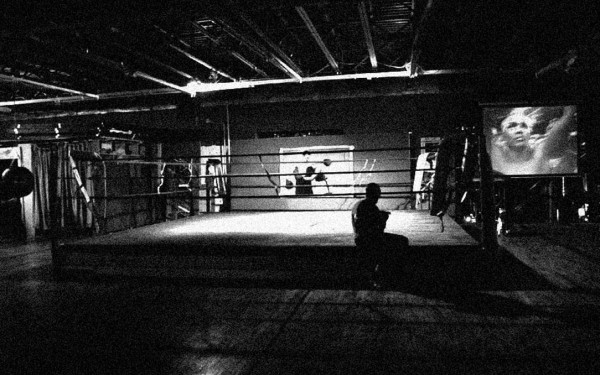Concordia’s New Visual Journalism Diploma Program
New reporters are expected to hone a slew of skills ranging from writing to video-editing as they prepare to enter an industry that continues to try to adapt to new forms of media—as it did for television and radio.
Did video kill the radio star?
Concordia’s journalism program reacted to that demand by proposing a visual journalism diploma program that was approved by the university’s senate during their meeting on March 14.
“There’s an increasing priority on video as readers shift to their mobile devices […] which brings new revenue streams, new opportunities,” The Globe and Mail’s managing photo editor Moe Doiron told The Link.
The one-year 33-credit program set to begin in May 2015 claims to prepare journalism hopefuls to “the demands of professional journalism [as they shift] from discrete newsroom roles into combined ones that [require] the journalist to be polyvalent, capable of producing stories for text, video, audio and online media,” in its 30-page program proposal available on the Concordia website.
“When I think of photojournalism, I think of stills, of news features, but it’s so much more now,” said Brian Gabrial, chair of Concordia’s journalism department.
There are a host of photography programs across the country, but community-college Loyalist College offers the sole photojournalism-specific program in Canada. Concordia will be the first to do so at the university level.
The program positions itself as complementary training for people who already have journalism experience as it seeks out recent journalism undergraduates, working photojournalists and reporters looking to diversify their skillsets.
“I think this is an opportunity for the school to have an impact on the industry in the future as opposed to forming these people who would just conform to the model that’s in place,” said Stanton Paddock, who was hired last year to spearhead the program that had been in the works since 2008.
A roster of experts and professors from the Department of Sociology, Communications and Journalism were consulted for the program’s creation. During its first year, it will be headed by the Journalism Graduate Diploma program director, Peter Downie.
“It’s telling that they decided to hire me before the program was even approved; they knew this was important. It was probably the biggest investment they made into the program,” added Paddock, who was a photojournalist and teacher in the United States and who researches trends in journalism education. His first mandate was to rework the proposal that had, according to him, sat mostly untouched since it was first drafted.
The program features 11 courses, including Visual Storytelling, Documentary and Photographic series, and News and Feature Photography, that are spread out over three terms throughout the year. The anticipated cost of the program in its first year is $179,648, which includes teaching and new equipment costs, according to its proposal.
What had first been pegged as a photojournalism graduate program was termed by Paddock the “visual journalism diploma program” in his rewording of the proposal. With shrinking job openings in the field, the original term seemed limiting.
Both The Montreal Gazette and The Globe and Mail shut their summer photojournalism internships this year, leaving only the Waterloo Region Record and The Winnipeg Free Press offering paid summer programs for students in the country.
“We’re seeing a drop in internships even if they’re cost effective, but it’s also because there’s a shift in types of jobs,” said Doiron.
With media convergence, many employment opportunities require applicants to have experience beyond photography or writing.
“You can’t really expect to have a legacy media job, say, at The Gazette or National Post anymore. People don’t realize that they might end up working at a trade magazine instead,” said Joshua Rapp Learn, who wrote an article, “Student Internship Opportunities Shrinking Across the Province” for online Canadian journalism resource J-Source. Learn completed internships at National Post, Canadian Geographic, The Canadian Press and The Rio Times and is now reporting for Greenwire, a media publication reporting environmental news.
It can be hard for a photojournalist who has been around for a while to all of a sudden accept that they’re going to be shooting video, and it can be hard for someone who’s only been writing for years to start taking photos and shooting video with their iPhones, said Learn.
“You can’t always teach an old dog new tricks. There’s going to be a transition period,” said Doiron, adding that “to survive, journalists should have an equal weighting” in writing, photo and videography.
“I’d like to see more quality. There are a lot of people getting slaps on the back for bad video because they got the story,” said Doiron.
According to the Pew Research Journalism Project’s “The State Of News Media 2014,” a yearly report “examining the landscape of American journalism,” 36 per cent of Americans watch news videos online. But, “producing high-quality video—or even streaming it live—can be costly, and the payoff is not clear.”
The study also found that 5,000 jobs were created at online news media outlets like VICE, The Huffington Post, BuzzFeed and small startups.
“Anybody who really wants a job in journalism is going to get one. There may be hard times along the way,” said Gabrial.
Paddock, Gabrial and Doiron agreed that despite the diminishing number of traditional journalism positions, there is no lack of opportunity. Young journalists will just have to be creative about their career paths.
“You do journalism because you care. You can’t be in it for money,” said Paddock.
For that, “there’s always wedding photography,” he added.

_820_544_90.jpg)
_600_832_s.png)

__600_375_90_s_c1.jpg)
1_600_375_90_s_c1.jpg)
